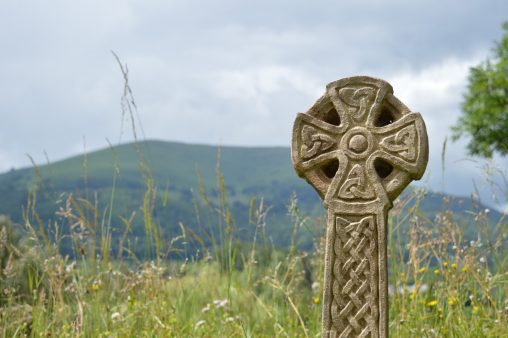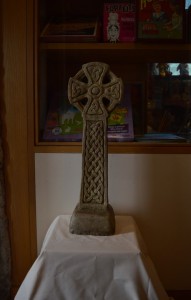Changing Perceptions: Our Relationship with Stone Monuments
23 June 2016
Stone Monuments
Stone Monuments are all around us, they range from the Neolithic Stonehenge to the thousands of war memorials we have in our cities, towns and villages. What they have in common is they create a memory shared by the society who created them. For example war memorials are synonymous with past conflicts, and remembering those who gave the greatest sacrifice. This is the creation of a memory held by us all, for many monuments such as early medieval stone monuments this is a social memory created by society (Williams et al 2015 1-34). The permanence of stone enforces this memory, ensuring the continuation of this memory. This has created a perception of the stone monument, one of the infulences argued to infulence perception is the location and surrounding landscape (Williams et al 2015 1-34).
So what am I doing with stone monuments?
Many stone monuments are now found in museums across the UK. They have been moved in museums for a multitude of reasons, such as the need to conserve, to the fact these monuments have been collected in the past and are no longer in their original locations. I seek to find out whether this transition to the musuem enviroment has affected how we actually look, experience and create a perception of these monuments.
How will I do this?
I brought a monument from my local garden centre, (about 60cm tall) and have aged the appearance to make it look more authentic, I’m indebted to the Conservation department at Cardiff University for letting me use their lab and their advice in how to age the monument. Below are the before and after pictures.

I will now be hauling the monument to Abergavenny Museum where I have selected two locations. Location one, set beneath the beautiful Blorenge on the tip of the Brecon Beacons (image below left) and location two set inside the museum’s entrance Porch (image below right). This is where the public come into it, I will be asking visitors to select six words which they feel describe the monument, and on a scale of one to four, how important stone monuments are to the landscape.


What do I hope to gain?
Through this I aim to reveal how we look at monuments and whether the transition to the museum display affects what our perception is. This will show to museums the impact of transition and whether further research into the display of stone monuments is required. After all it is the public who create the value we ascribe to museum collections, we must therefore understand how our actions can affect our change in perception. We are all stakeholders in our heritage and therefore can influence museums, this study intends to ensure this continues.
References
Williams H, Kirton J and Gondek M, 2015, Early Medieval Stone Monuments: Materiality, Biography, Landscape, Boydell Press,Woodbridge
William Tregaskes MSc Care of Collections: Cardiff University
Follow my progress on twitter @TregaskesW
Comments
2 comments
Comments are closed.
- March 2024 (1)
- December 2023 (1)
- November 2023 (2)
- March 2023 (2)
- January 2023 (6)
- November 2022 (1)
- October 2022 (1)
- June 2022 (6)
- January 2022 (8)
- March 2021 (2)
- January 2021 (3)
- June 2020 (1)
- May 2020 (1)
- April 2020 (1)
- March 2020 (4)
- February 2020 (3)
- January 2020 (5)
- November 2019 (1)
- October 2019 (1)
- June 2019 (1)
- April 2019 (2)
- March 2019 (1)
- January 2019 (1)
- August 2018 (2)
- July 2018 (5)
- June 2018 (2)
- May 2018 (3)
- March 2018 (1)
- February 2018 (3)
- January 2018 (1)
- December 2017 (1)
- October 2017 (4)
- September 2017 (1)
- August 2017 (2)
- July 2017 (1)
- June 2017 (3)
- May 2017 (1)
- March 2017 (2)
- February 2017 (1)
- January 2017 (5)
- December 2016 (2)
- November 2016 (2)
- June 2016 (1)
- March 2016 (1)
- December 2015 (1)
- July 2014 (1)
- February 2014 (1)
- January 2014 (4)
In your view is the best place for monuments in their original location?
In my view I think the best place is dependant on many factors, this includes the need to conserve for future generations,accessibility of the monument, the importance of the original location to the monument, the public’s view of the monument. Together this means the best location for each monument is unique and is dependant on the balance of multiple factors. The purpose of this study is to increase our ability to make decisions on the location of each individual monument and begin to develop an idea of how the public view and create perceptions of monuments.